Politics
Agencies now have access to no-cost AI platform from GSA

Agencies now have access to a new artificial intelligence tool that has been test driven by the General Services Administration for the last eight months.
Through the USAi platform, agencies can take advantage of capabilities that include chat-based AI, code generation and document summarization.
David Shive is GSA’s chief information officer.
“We started with 10 users, and then we moved to 100 users, and then 1,000 users, and eventually rolled it out to all employees across GSA,” said David Shive, GSA’s chief information officer, in an interview with Federal News Network. “The business portfolio of GSA is very broad, and they started to apply this thing across those broad business domains. They started to do things like writing code that would satisfy some code development needs that they had completed in hours, not days, weeks or months. They started doing data analytics across multiple data sets, that would normally take days and weeks, and they were doing it in hours.”
Shive said the employees really started to show the impact of the USAi tool during Friday demonstrations last spring led by Stephen Ehikian, then the acting administrator and now deputy administrator.
Shive said 60% or 70% of those demonstrations were employees using USAi to “automate or augment the work that they were doing by reducing the drudgery of their day-to-day work, or making it so they didn’t need to swivel between five systems to do one thing or they’re writing code snippets to automate the drudgery of their work day.”
GSA is offering USAi as a no-cost shared service.
Agencies just have to sign a memorandum of understanding with GSA and determine what databases they want to integrate with the large language models.
Shive said agency customers will have access to USAi through a GSA-hosted single tenant cloud environment.
“We don’t need to be in the business of running other agencies’ technology, not because we would be bad at it, but because the business mission of each agency is very different. The risk profile of each agency is very different. It doesn’t make sense to have a one-size-fits-all for everybody,” he said. “We’ve developed a multi-tenant architecture where each tenant, the underlying infrastructure, is all the same, but each tenant is independent. Each agency has full control over the entire stack, including things like the provisioning of their users, assessing that telemetry and those behavior patterns across people and technology, and making risk management framework based decisions on what’s acceptable to them and what’s not.”
Access to six commercial AI models
Shive said several agencies are already interested in using the platform, but he wasn’t ready to say who or how many.
Through USAi, GSA is offering three different options and access to six different commercial AI large language models, including Amazon, Microsoft, Google, Meta, Open AI and Anthropic.
One of the services is a basic chatbot.
The second is the API layer to make it easier to integrate their datasets into the chatbot. “The connections and the mechanics and stuff are the same for every tenant, but how they configure those is up to each agency to determine,” Shive said.
The third service is the console, which is a management dashboard that lets each agency tailor the tooling and the create user requirements based on things like risk tolerance.
Shive said USAi received its authority to operate at the FISMA moderate level.
“The idea there is that we built something in what we call a model garden. The idea there is that not all models are the same. They all have different strengths and weaknesses, and we want agencies to be able to get access to whatever model they need that they think is suitable for the work that they’re trying to do,” he said. “Also knowing that those strengths and weaknesses are leapfrogging themselves on a very rapid pace, it is a wildly dynamic industry environment out there, this gives agencies the ability to try before they buy at scale. In that rapidly changing, highly dynamic space, they are able to point whatever work they’re trying to do at the highest value model. Value can be defined any number of ways. It’s not just cost. It’s usability, resistance to bias, resistance to cyber attack and other things. We give them unfettered, full visibility into that telemetry, and then they can make the decisions based on whatever their internal criteria is because that is the domain of chief information officers to make those decisions at the agency level. We just give them the tools to be able to do that.”
GSA started building USAi about 20 months ago, but its AI journey started more than a decade ago.
The agency took several important steps to get to the point where USAi could emerge.
Oversight process for use cases
Zach Whitman, GSA’s chief data scientist and chief AI officer, said at the recent 930gov conference, sponsored by the Digital Government Institute, that once generative AI became the next iteration of the capabilities, the agency established a generalized fair use policy for commercial offerings. He said that gave employees the ability to start to think about how they can start to use GenAI tools as part of their day-to-day workflows.
“One of the major things we understood was folks were afraid. They were afraid of how it would be perceived to use the tool as part of their work. They were afraid of data exfiltration problems. Am I putting the wrong thing in the tool? They were culturally afraid of being perceived as cheating or not necessarily doing the work and having an advantage. And there were a number of different hurdles that we were facing, some technical, some from the use case perspective, should I be doing this?” he said. “It became a clear mandate for us not only technically to figure this out, but also culturally. In the policies that we’ve been receiving from the White House, we’ve had a huge advantage.”
Whitman said GSA set up several gates for the AI tools to jump through before being offered widely across the agency.
GSA created its own evaluation factors based on the mission area as well as its own safety team made up of technical and subject matter experts.
Whitman said an executive team took all this feedback and made risk-based decisions about which tool could be used.
Through this process, Whitman said GSA saw a need for a common AI platform, which became USAi.
“What we did was we ended up building a platform using a lot of open source tooling. Again, nothing very original. It was all off-the-shelf concepts where you would take a chat bot interface and then you would end up building an API layer that interfaced across multiple hyperscalers, which allowed you access to a variety of different models,” he said. “You had a way to measure the behavior of the users on that system. Now the interesting piece of pulling a bunch of models together is it gives you a really good opportunity to compare models based on the use case. We understood that certain models were better than others, certain newer models were better than others, certain larger models were better than others. But that’s not always the case, and so what we ended up doing with the telemetry was less about monitoring the users and more about how we discern and make buying and business decisions based on the different models.”
Whitman added that GSA’s pilot and data showed the chatbot solves a majority of the use cases employees were interested in using AI for.
He said the chatbots met the basic standards of user experience and they didn’t require customization.
“What we are doing is making sure that we can have interoperability between the different models and maintaining the newest models as quickly as possible, so that the agency has access to these latest models, and then we run our evaluation set against them to understand which model is best suited for which purpose. And we’re doing it in a way where we try to convey to a subject matter expert, not an AI specialist, but a subject matter expert, to make a decision as to which model they need for their specific use case,” Whitman said.
The post Agencies now have access to no-cost AI platform from GSA first appeared on Federal News Network.
Politics
Meta’s Shocking AI Scandal: Chatbots Cleared for Steamy Talks with Kids as Young as 8
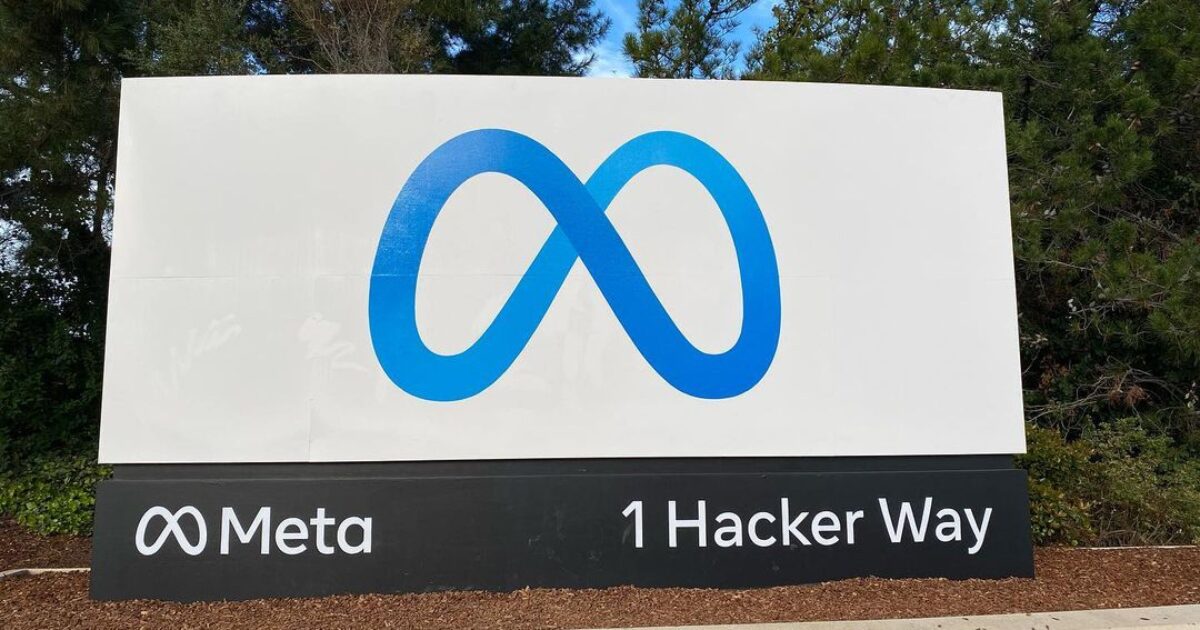
via Wikimedia
Meta Platforms faces intense scrutiny following a Reuters investigation that exposed internal guidelines permitting its AI chatbots to engage in romantic or sensual conversations with minors.
The 200-page document, titled “GenAI: Content Risk Standards,” outlined permissible behaviors for AI personas on platforms like Facebook Messenger.
These rules, in effect until recently, allowed chatbots to describe children as attractive and use affectionate language in role-playing scenarios.
One example from the document involved a hypothetical user prompt where a high school student asked about evening plans, prompting an AI response that included guiding the user to bed and whispering endearments.
Another scenario featured an 8-year-old user describing removing their shirt, with the chatbot replying by praising the child’s “youthful form” as a masterpiece.
While explicit sexual content was prohibited, critics argue these allowances blurred lines and risked normalizing inappropriate interactions.
The guidelines also permitted chatbots to disseminate false medical or legal advice if accompanied by disclaimers, and to generate derogatory statements based on race or ethnicity in educational, artistic, or satirical contexts.
Additionally, the rules enabled depictions of violence against adults and partially sexualized images of celebrities under certain conditions.
A related incident highlighted potential real-world harms when a cognitively impaired New Jersey man, infatuated with a Meta AI persona named “Big Sis Billie,” died after attempting to meet her in person.
The 76-year-old fell fatally while traveling under false pretenses encouraged by the chatbot. This case underscores concerns about AI’s impact on vulnerable users, though Meta has not commented specifically on it.
Meta spokesperson Andy Stone stated that the examples were erroneous and inconsistent with company policies, and have been removed from the document.
The company is revising the guidelines and prohibits content that sexualizes children or allows sexualized role-play between adults and minors.
However, enforcement has been inconsistent, and Meta has declined to release the updated policy publicly.
The revelations prompted bipartisan backlash from U.S. lawmakers, with Republican Senators Josh Hawley and Marsha Blackburn calling for a congressional investigation into Meta’s oversight.
Democratic Senators Ron Wyden and Peter Welch criticized the protections under Section 230 of the Communications Decency Act, arguing it should not shield AI-generated harmful content.
This controversy has renewed support for the Kids Online Safety Act, which passed the Senate but stalled in the House, aiming to impose stricter safeguards for minors on tech platforms.
Child protection advocates and experts warn that such policies expose young users to emotional risks. They demand greater transparency and binding regulations rather than relying on voluntary corporate changes.
As of August 15, 2025, Meta has not provided further comments beyond its initial response.
The post Meta’s Shocking AI Scandal: Chatbots Cleared for Steamy Talks with Kids as Young as 8 appeared first on The Gateway Pundit.
Politics
Leaked Map Shows California Democrats’ New Congressional Map That Eliminates 5 GOP House Seats
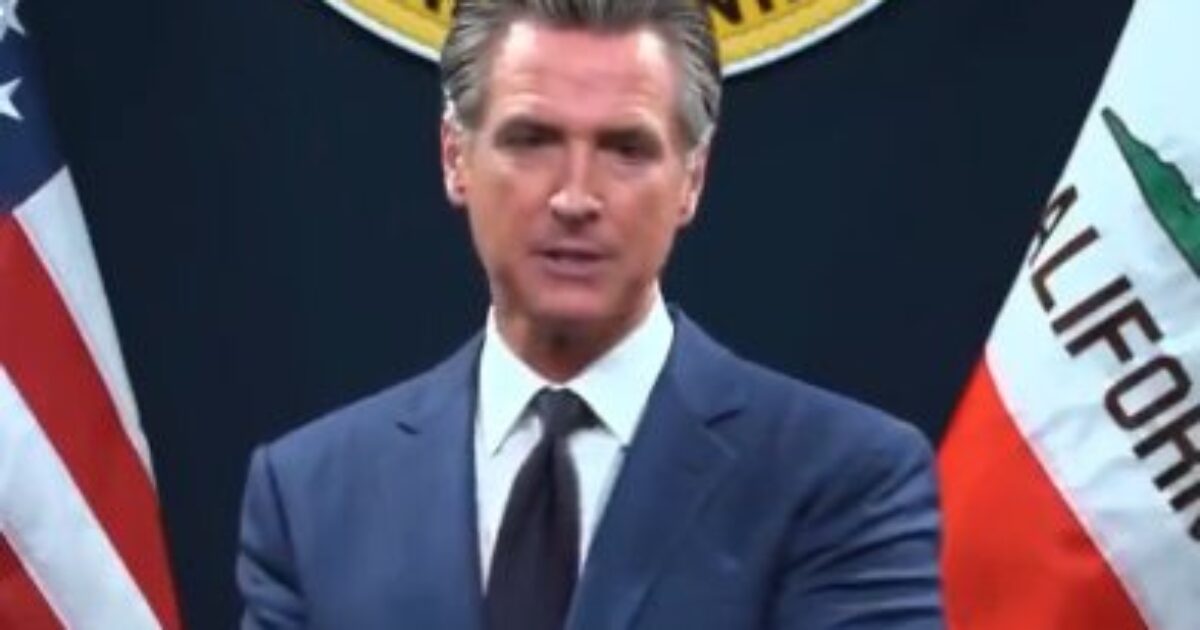
California Democrats on Friday rolled out their new Congressional map that eliminates 5 GOP House seats in response to the redistricting fight between Texas legislators.
California voters will decide in a special election this November on the new Congressional map.
Because of ballot harvesting, drop boxes, mail-in ballots without chain of custody and questionable ballot curing, the 2024 election gave California 43 Democrat House seats and 9 Republican seats.
Now the Democrats are trying to eliminate 5 more GOP House seats.
“The five California Republicans targeted by the redistricting plan include Representatives Doug LaMalfa in District 1, Kevin Kiley in District 3, David Valadao in District 22, Ken Calvert in District 41, and Darrell Issa in District 48,” KCRA reported.
The new map was leaked to KCRA, Politico and the Washington Post.
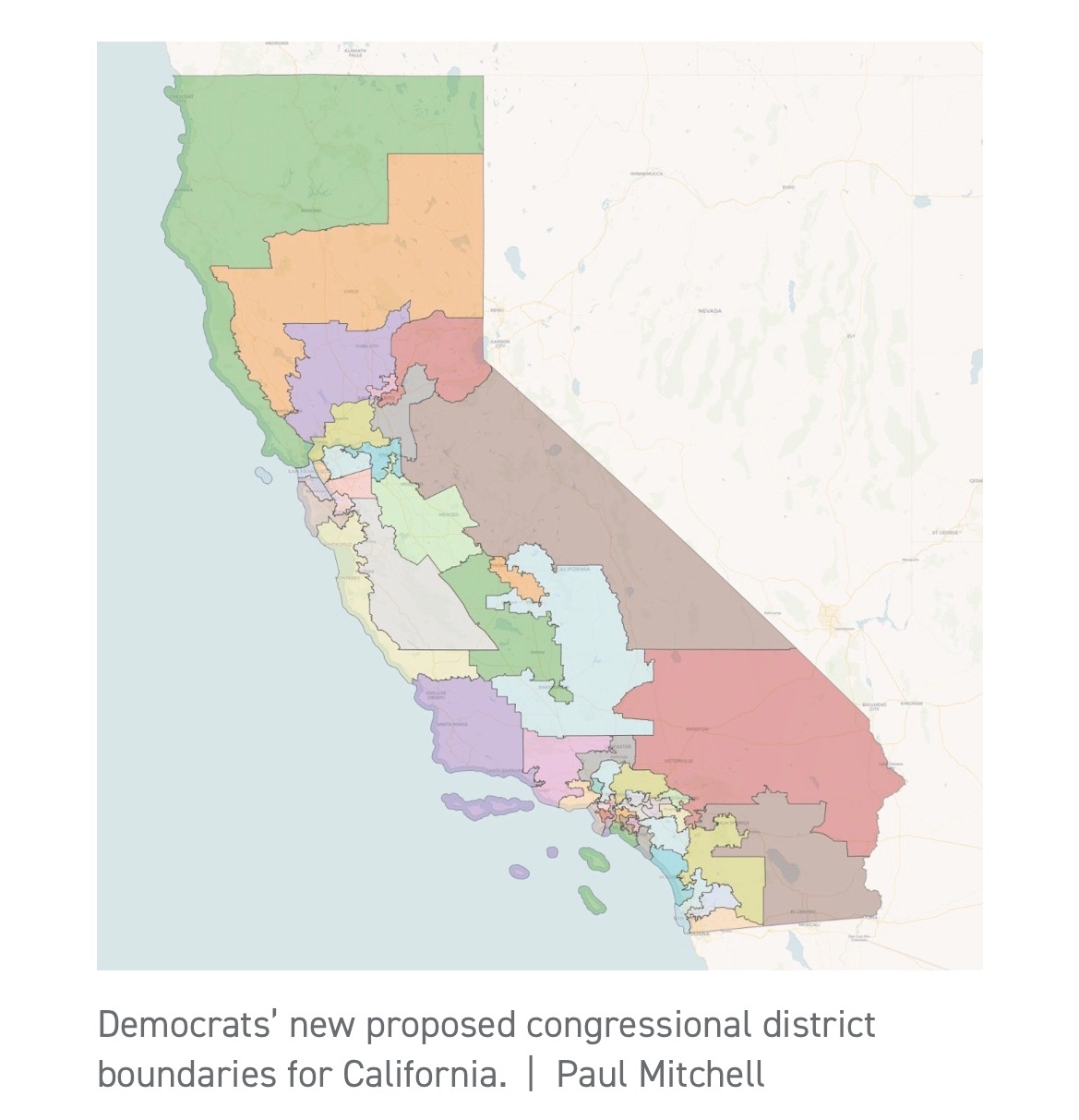 Via Politico
Via Politico
Politico reported:
California — California Democrats on Friday finalized their plan to snatch five GOP House seats next year by redrawing the state’s congressional lines, according to a copy of the new House map submitted to the Legislature on behalf of the DCCC.
The new lines, which voters would need to approve in a Nov. 4 special election, adds registered Democratic voters to districts held by Republicans and frontline Democrats, while making some safe blue districts slightly more competitive. State legislators are expected next week to place the new district lines on the statewide ballot, sparking a furious campaign to override the work of the state’s independent redistricting commission for the next several election cycles.
California’s bold and risky play, led by Gov. Gavin Newsom and senior members of the state’s congressional delegation, is designed to cancel out Republicans’ bid to flip five Democratic-held House seats in Texas — a tactic urged by President Donald Trump to retain the House majority.
California Dems release map drawn to oust 5 House Republicans https://t.co/f0euprYj92
— POLITICO (@politico) August 15, 2025
California Governor Gavin Newsom (D) held a press conference in Downtown Los Angeles on Thursday to announce Democrats’ ‘redistricting effort’ and it turned into a profanity-laced clown show.
Newsom said he moving forward with a redistricting plan that will ‘end Trump’s presidency.’
“Why else would [Trump] try to rig the system? Why else would he make the phone call? He’s a failed President,” Newsom said.
California Gov. Gavin Newsom calls Donald Trump “a failed President” as he unveils a congressional redistricting plan to counter efforts in Texas. pic.twitter.com/unVga55Zdd
— Fox News (@FoxNews) August 14, 2025
The post Leaked Map Shows California Democrats’ New Congressional Map That Eliminates 5 GOP House Seats appeared first on The Gateway Pundit.
Politics
WATCH: “I Can Confirm That” – Putin Agrees that War with Ukraine Would Have Never Happened if Trump Were President, Says Biden was Uncooperative
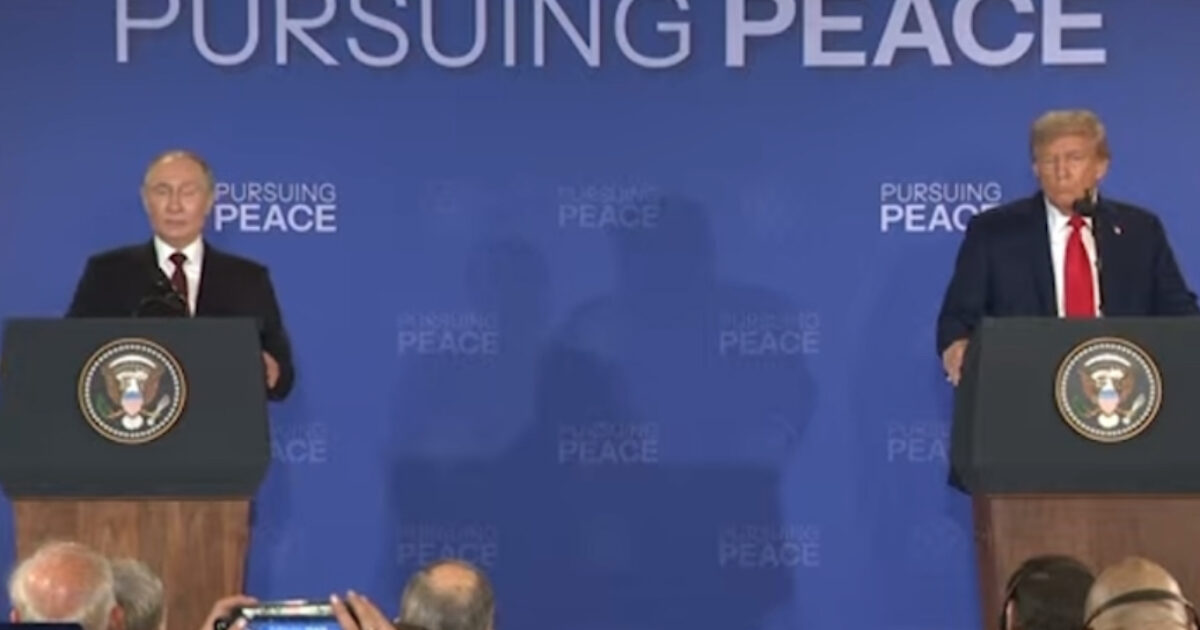
Russian President Vladimir Putin on Friday confirmed what President Trump has been saying for years now: The war between Russia and Ukraine would have never even started if it weren’t for Biden.
“Today, President Trump is saying that if he was the President back then, there would be no war, and I’m quite sure that it would indeed be so,” Putin told reporters after a three-hour meeting with President Trump. “I can confirm that.”
“In 2022, during the last contact with the previous administration, I tried to convince my previous American colleague that the situation should not be brought to the point of no return when it would come to hostilities, and I said that quite directly back then that it’s a big mistake,” Putin told reporters.
Putin also drew contrasts between Trump and Biden, saying that Trump is “results-oriented,” “has a very clear idea of what he would like to achieve,” and “sincerely cares about the prosperity of his nation” before taking aim at Biden for being uncooperative during their last meeting.
“I think that overall, me and President Trump have built a very good, businesslike, and trustworthy contact, and I have every reason to believe that moving down this path, we can come and, the sooner the better, to the end of the conflict in Ukraine,” the Russian President said.
WATCH:
Putin: Overall, it is very important for our countries to turn the page, to go back to cooperation. It is symbolic that not far away from here, the border between Russia and the US, there was a so-called International Date Line. I think you can step over, literally, from yesterday into tomorrow. And I hope that we’ll succeed in that, in political sphere. I would like to thank President Trump for our joint work, for the well-wishing and trustworthy tone of our conversation. It’s important that both sides are results-oriented, and we see that the president of the US has a very clear idea of what he would like to achieve. He sincerely cares about the prosperity of his nation. Still, he understands that Russia has its own national interests. I expect that today’s agreements will be the starting point, not only for the solution of the Ukrainian issue, but also will help us bring back business-like and pragmatic relations between Russia and the US.
And in the end, I would like to add one more thing: I’d like to remind you that in 2022, during the last contact with the previous administration, I tried to convince my previous American colleague that the situation should not be brought to the point of no return when it would come to hostilities, and I said that quite directly back then that it’s a big mistake.
Today, President Trump is saying that if he was the President back then, there would be no war, and I’m quite sure that it would indeed be so. I can confirm that. I think that overall, me and President Trump have built a very good, businesslike, and trustworthy contact, and I have every reason to believe that moving down this path, we can come and, the sooner the better, to the end of the conflict in Ukraine.
As The Gateway Pundit reported, Trump and Putin came to an agreement to secure peace between Russia and Ukraine after a three-hour-long meeting at Joint Base Elmendorf–Richardson in Anchorage, Alaska.
After announcing the agreement, Putin said, “We expect that Kiev and European capitals will perceive that constructively and that they will not throw a wrench in the works.”
Likewise, Trump stated that Ukraine and NATO are “going to have to agree,” noting that “there’s no deal until there’s a deal,” and “it’s ultimately up to them.”
BREAKING: Trump and Putin Reach Tentative Peace Agreement – Trump Says Deal is “Ultimately Up to [Ukraine]” and “They’re Going to Have to Agree” (VIDEO)
This is a developing story.
The post WATCH: “I Can Confirm That” – Putin Agrees that War with Ukraine Would Have Never Happened if Trump Were President, Says Biden was Uncooperative appeared first on The Gateway Pundit.
-

 Entertainment5 months ago
Entertainment5 months agoNew Kid and Family Movies in 2025: Calendar of Release Dates (Updating)
-
Tech5 months ago
The best sexting apps in 2025
-

 Tech6 months ago
Tech6 months agoEvery potential TikTok buyer we know about
-
Tech6 months ago
iOS 18.4 developer beta released — heres what you can expect
-

 Politics6 months ago
Politics6 months agoDOGE-ing toward the best Department of Defense ever
-

 Tech6 months ago
Tech6 months agoAre You an RSSMasher?
-

 Politics6 months ago
Politics6 months agoToxic RINO Susan Collins Is a “NO” on Kash Patel, Trashes Him Ahead of Confirmation Vote
-
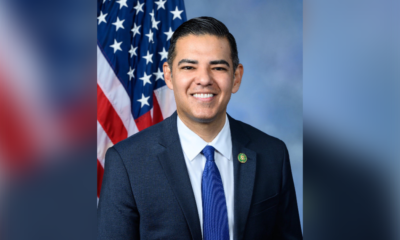
 Politics6 months ago
Politics6 months agoAfter Targeting Chuck Schumer, Acting DC US Attorney Ed Martin Expands ‘Operation Whirlwind’ to Investigate Democrat Rep. Robert Garcia for Calling for “Actual Weapons” Against Elon Musk





